Most of us reading this site want Steam Machines to do well. Not all of us will be interested in buying the hardware, but we're aware that its success is also tied to the success of Linux as a gaming platform, which is why I'm pretty miffed that the OEMs and Valve have messed it up.
Valve have done well with the controller and with making SteamOS pretty coherent and user-friendly, but messed it up when it came to defining what a Steam Machine actually is, leaving it open to interpretation. I've said this time and time again, but the original Steam Machines line-up was a complete mess. We had everything from $1500 PCs to ludicrously overpriced machines which didn't even have discreet graphics cards.
Even the best offerings fall short. Alienware's cheapest offering comes in at $450 (this should be the ideal price point in my opinion), but offers a mere 4GB RAM. If you want to scale this up to 8GB, you have to pay $750 since it also means upping the CPU to an i5. Does a GTX 960 need an i5 to do its thing? No, not really. You might get a few extra frames or do better in a more CPU-intensive game, but if one tries to step outside the worldview of a PC gamer and into one of a console gamer, then it doesn't take long to realise that those $200 aren't worth it, but $20 for an extra stick of 4GB RAM would be worth it.
This is perhaps the most frustrating thing. Most of the time, the specs are completely wrong, but when they're not then the price is a serious problem. An Intel i3 and Nvidia 960/1060 series (or AMD equivalent) are the perfect mass market specs for a sofa 1080p gamer just coming off a console. Someone with more needs than that will know how to build a PC and will do it cheaper and better than an OEM.
With the GTX1060 coming out, estimated to have a performance somewhere between a 970 and 980 (probably more on the side of a 980, but I like being conservative) at $250, and if AMD's Zen architecture lives up to the hype and delivers the same price/performance ratio benefits that the Piledriver architecture did, then we could be looking at a new era for the Steam Machine if things are done right this time round.
So what should be done right? First and foremost, deliver the best performance at the lowest cost possible. There is absolutely no room for diminishing returns here, which is why I can't advocate i7s or even i5s. Upgradability would also be a nice plus and a huge selling point if it's approached in a way where a non-technically minded user can get an upgrade easily through using modular designs (there's a lot of possibilities here, but too much to go into for this article). This has the potential to be a massive selling point over this last console generation, which was underpowered on release.
The second, and perhaps more controversial, point is that Valve should really take a few lessons from the console world. By this I mean manufacturing their own machine (which doesn't mean exclusivity). While the idea of everyone building their own box is amicable, the disadvantages far outweigh the benefits. This is what makes consoles so competitive, gives them (historically, not this last generation) great performance compared to PCs on launch at a much better price, with a considerable lifespan.
There's a few reasons for this. Firstly, there's economies of scale, with a single manufacturer pumping out tonnes of machines, the production costs are lower for a number of reasons which this article won't touch upon. Secondly, the benefits of optimisation are tremendous. If everyone is developing for the same hardware, it's easy to accommodate for and optimise a game to get the most out of that hardware - this is one of the main reasons why consoles have such a long lifespan, considering this optimisation also gets better with time. The third reason is simply a retail one, since a high street vendor is far more likely to stock Steam Machines if there's only one option, again for a number of reasons. There's probably more, such as the ability to sell hardware at a loss or a significantly lower profit margin (since that money is made back through game sales), but those are the main ones.
In essence, for Steam Machines to succeed, I would like to see something priced at just over $400 (might be a bit optimistic, but possible with lower profit margins) made by Valve and at those sweet spot specs I mentioned earlier. The original launch was very underwhelming, but there's still a lot of potential to turn things around significantly if Valve come to their senses. Even without them making their own hardware, there's still room for OEMs to improve a lot.
Valve have done well with the controller and with making SteamOS pretty coherent and user-friendly, but messed it up when it came to defining what a Steam Machine actually is, leaving it open to interpretation. I've said this time and time again, but the original Steam Machines line-up was a complete mess. We had everything from $1500 PCs to ludicrously overpriced machines which didn't even have discreet graphics cards.
Even the best offerings fall short. Alienware's cheapest offering comes in at $450 (this should be the ideal price point in my opinion), but offers a mere 4GB RAM. If you want to scale this up to 8GB, you have to pay $750 since it also means upping the CPU to an i5. Does a GTX 960 need an i5 to do its thing? No, not really. You might get a few extra frames or do better in a more CPU-intensive game, but if one tries to step outside the worldview of a PC gamer and into one of a console gamer, then it doesn't take long to realise that those $200 aren't worth it, but $20 for an extra stick of 4GB RAM would be worth it.
This is perhaps the most frustrating thing. Most of the time, the specs are completely wrong, but when they're not then the price is a serious problem. An Intel i3 and Nvidia 960/1060 series (or AMD equivalent) are the perfect mass market specs for a sofa 1080p gamer just coming off a console. Someone with more needs than that will know how to build a PC and will do it cheaper and better than an OEM.
With the GTX1060 coming out, estimated to have a performance somewhere between a 970 and 980 (probably more on the side of a 980, but I like being conservative) at $250, and if AMD's Zen architecture lives up to the hype and delivers the same price/performance ratio benefits that the Piledriver architecture did, then we could be looking at a new era for the Steam Machine if things are done right this time round.
So what should be done right? First and foremost, deliver the best performance at the lowest cost possible. There is absolutely no room for diminishing returns here, which is why I can't advocate i7s or even i5s. Upgradability would also be a nice plus and a huge selling point if it's approached in a way where a non-technically minded user can get an upgrade easily through using modular designs (there's a lot of possibilities here, but too much to go into for this article). This has the potential to be a massive selling point over this last console generation, which was underpowered on release.
The second, and perhaps more controversial, point is that Valve should really take a few lessons from the console world. By this I mean manufacturing their own machine (which doesn't mean exclusivity). While the idea of everyone building their own box is amicable, the disadvantages far outweigh the benefits. This is what makes consoles so competitive, gives them (historically, not this last generation) great performance compared to PCs on launch at a much better price, with a considerable lifespan.
There's a few reasons for this. Firstly, there's economies of scale, with a single manufacturer pumping out tonnes of machines, the production costs are lower for a number of reasons which this article won't touch upon. Secondly, the benefits of optimisation are tremendous. If everyone is developing for the same hardware, it's easy to accommodate for and optimise a game to get the most out of that hardware - this is one of the main reasons why consoles have such a long lifespan, considering this optimisation also gets better with time. The third reason is simply a retail one, since a high street vendor is far more likely to stock Steam Machines if there's only one option, again for a number of reasons. There's probably more, such as the ability to sell hardware at a loss or a significantly lower profit margin (since that money is made back through game sales), but those are the main ones.
In essence, for Steam Machines to succeed, I would like to see something priced at just over $400 (might be a bit optimistic, but possible with lower profit margins) made by Valve and at those sweet spot specs I mentioned earlier. The original launch was very underwhelming, but there's still a lot of potential to turn things around significantly if Valve come to their senses. Even without them making their own hardware, there's still room for OEMs to improve a lot.
Some you may have missed, popular articles from the last month:
All posts need to follow our rules. For users logged in: please hit the Report Flag icon on any post that breaks the rules or contains illegal / harmful content. Guest readers can email us for any issues.
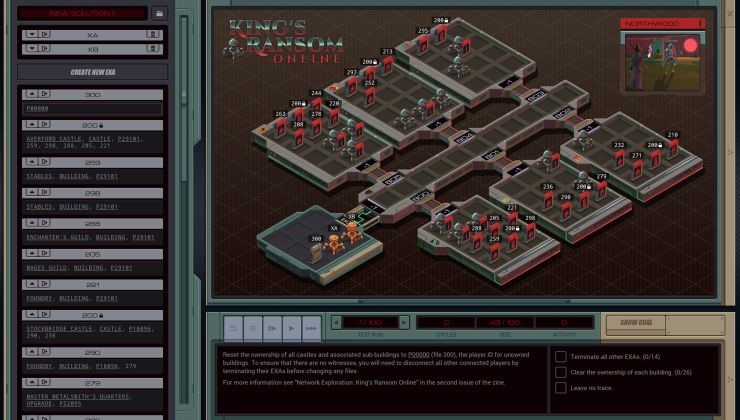
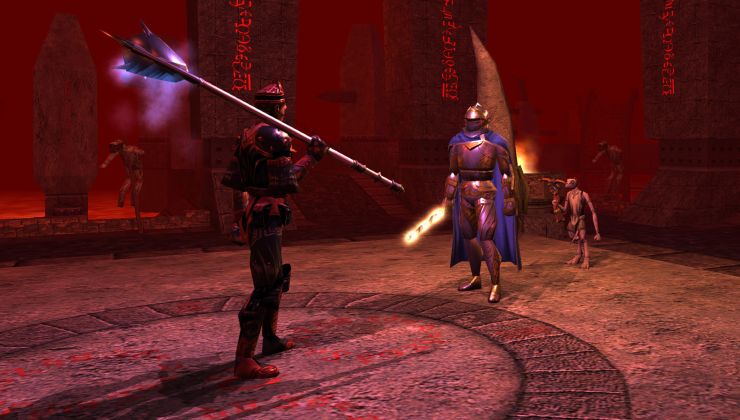
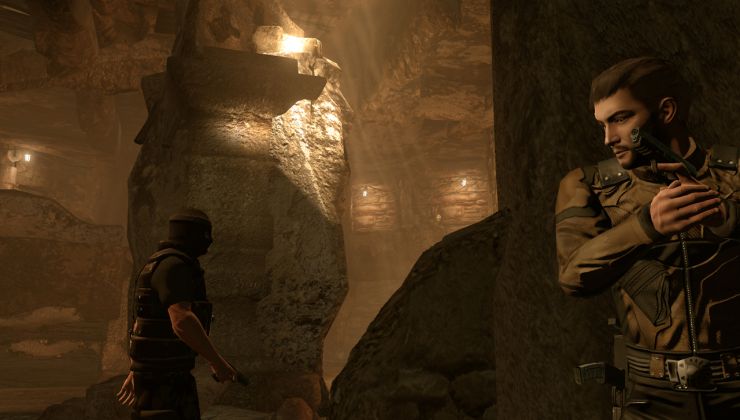

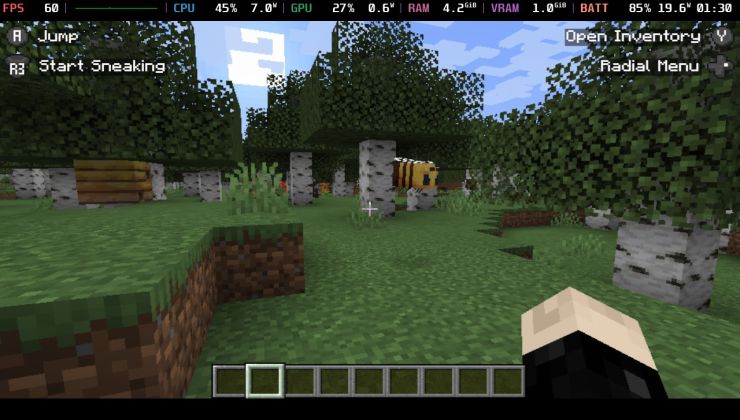 An idiots guide to setting up Minecraft on Steam Deck / SteamOS with controller support
An idiots guide to setting up Minecraft on Steam Deck / SteamOS with controller support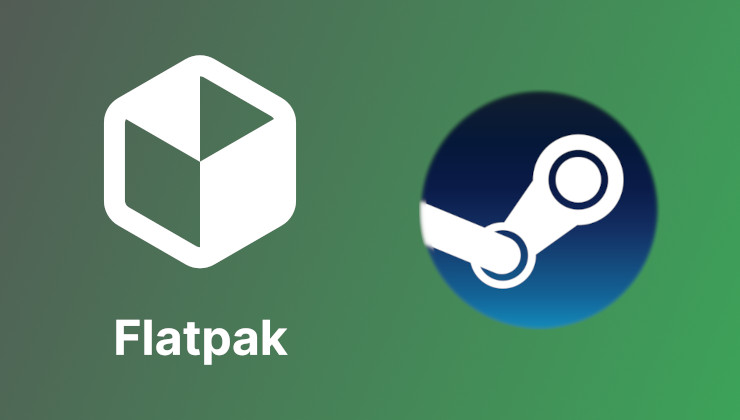 How to install extra software, apps and games on SteamOS and Steam Deck
How to install extra software, apps and games on SteamOS and Steam Deck
The problem is that testing entertainment software on every variety and combination of hardware released even in just last three years is prohibitively expensive for providers of entertainment software (or any software, for that matter). The minimum specs you see on most games are not really the minimum specs, they're just the least powerful machine that was tested on. This is why developers like consoles, only one thing to test.
Customers do not want exclusives. Customers want good games. Console vendors, and Microsoft, try and use good games as exclusives to force customers to buy their product over competitors. Exclusives hurt customers. However, I don't have a problem with games releasing on one platform first and then others (I think a year is to long though, 3 months or 6 at most is reasonable). Fanboys may want exclusives so that they have something to hold over fanboys (or even regular owners) of other systems. These sick individuals are an extremely small portion of customers however and are unimportant. They can love their chosen platform without exclusives and they will.
Issues:
1. Valve want partners to make hardware (Dell and others). Not to compete with them. It's the same reason Google were hesitant to make mobile hardware.
2. There should not be "one hardware target". That's easy but also very bad, since games simply won't work properly on anything else. No thanks, but thanks. You should not ask for such lock-in.
About the rest - I agree. Such consoles should be as cheap as possible, but not cheaper! Don't forget that incumbent consoles (MS and Sony) aren't priced realistically, they are subsidized. Steam Machines aren't supposed to do that, they are intended to disrupt the market with real competition, and bring prices to real level.
Last edited by Shmerl on 11 Jul 2016 at 3:55 pm UTC
Console gamers will look for two things: 1) Affordable price. It doesn't necessarily have to beat PS4 or Xbone, but it should come close. 2) Game availability. People want to play the games they like. This is improving over time as more games come to Linux. These gamers won't care what OS is running in the box as long as the games are there and perform equal to or better than consoles (an easy mark to achieve).
For Windows gamers, it's a more difficult sell. TO lure them to SteamOS, it's all about performance. When Linux reaches a point where it can truly outperform Windows, I think a lot of Windows gamers will gladly ditch it. Microsoft hasn't maintained dominance because there are truly that many fanboys out there. It's different than Apple's users. People use Windows out of a feeling of necessity and then complain about it even as they use it. If these people eventually see the benefits of SteamOS, they'll build their own Steam Machines, which suits Valve just fine. They care about selling games on their platform, regardless of the hardware.
Last edited by chipgw on 11 Jul 2016 at 5:00 pm UTC
No, sorry, but it's not. Compared to the console and windows gaming platforms we are way, waaaaaay off even being a slightly realistic alternative for an average "serious" gamer.
Kerbal is not AAA. not even Cities are. AAA are the major releases from the big ones; Bioware, EA, Ubisoft, Rockstar, Blizzard & co with franchises like Assassins Creed, Call Of Duty, Battefront, Mass Effect, Overwatch, The Division, Fallout, GTA, The Witcher, Bioshock, Uncharted, Far Cry and so forth. The big productions.
And the problem is: It's not enough with just one or two of the absolute top tier releases. A gamer want them all. On release day. Not a day later. He can miss out on maybe one or two due to exclusivity, but no way he'll go for a platform that only can offer one or two of ten major releases. And one billion indie releases can not make up for that; they don't count at all.
So we are so, so far behind being a player in that market yet. I believe this is exactly why Valve hasn't pushed SteamOS: It's not ready for the mass market. You only got one chance to make a first impression.
Last edited by Beamboom on 11 Jul 2016 at 5:10 pm UTC
We shouldn't be trying to market pretty mediocre hardware just to get a few more %'s in a misguided attempt to hopefully get better game support. Any of the people who do end up being suckered into these machines are likely to have an awful experience anyway.
The hardware isn't great, the ports are significantly worse than their windows counterparts, the store page shows great titles you can't play, and a lot of the games worth playing you are going to want to play with a kb/m.
This stuff isn't ready for mass adoption by console folks and there isn't a hardware combination, price point, or "I'm a MAC" type commercial that is going to change that any time soon.
I know a few Steam gamers who bought the Alienware machine who were extremely upset. They didn't realize they wouldn't be able to play their Windows titles on that machine.
You may think "Wow that's their fault for not understanding the product."
I'd agree to some extent, but remember those people are who the Steam Machines are being marketed to. Until we get to a point where the majority of new releases for PC see proper support on Linux I wouldn't recommend anyone buy a Steam Machine for their gaming purposes.
I believe that day will come eventually, most likely due to ease of porting rather than market share. The software will have to come first to break the chicken - egg paradigm.
Why do you call these big productions? Why are the games I named not big productions?
I only difference I can pinpoint is that you are naming typical console games that are ported to PC afterwards. But that would be a very bad definition of AAA. Deal with it, PC will always have a different portofolio of games.
This is exactly what I am trying to point at. Why do they want them all? Marketing. Therefore fix the marketing towards games that are on SteamOS.
Last edited by dmantione on 11 Jul 2016 at 5:43 pm UTC
Disagreed. A PS4 with a full system, all cables and a controller costs less than what you'd give for just a graphics card in your homebuilt rig, before you even got a motherboard to run the game on. With that system you can play all new games flawlessly for years to come, hardly a hickup, on a system that does what it should all the time. I'd not call that a bad deal for someone who just want to play games.
Everyone who see things differently than you are not therefore idiots. It's about perspective and priorities.
Because they are not. Kerbal is, as far as I am aware, made by a small handful of persons in Mexico. Ubisoft Montreal, who make the Assassins Creed games, have a staff of near three THOUSAND employees - of whom many hundred works on this franchise every year. Sledgehammer, who are one of *three* developers who make the Call Of Duty games, are three hundred employees, spending three years on each of their COD installments.
That's the difference between a small indie game like Kerbal and a major AAA release like Star Citizen or Elite (to mention two other examples of (primarily) PC-games).
This is what the mass market want. They want the big hitters. The games you see marketed on billboards, TV, the games thousands play on Twitch, the games where tournaments are held and big events arranged. That's the AAA world. And Kerbal or Cities are not part of that world. Not even that universe.
If that really is the only difference you can see between Kerbal Space Program and, say, Fallout 4 then I must kindly and respectfully ask you to take off your fan-glasses and take a closer look.
But sadly, yeah, most of the AAA games are developed for consoles first, because that's such a huge share of the market. They need millions sold copies to even break even with their productions. They need to make sure their games works on consoles. It's how things are. :(
I don't see new AAA games coming anytime soon with the apparent stagnation of Linux steam usage, judged by Steam stats.
I think non-port solutions need to be looked at because AAA ports (aside from the occasional back-catalog port by Feral, VP, or Aspyr) seems out of the question.
* Advancing Wine technology with workable Direct3D 11 support
* Cloud gaming
The wine-based Linux client for the new cloud gaming provider has arrived:
http://blog.liquidsky.tv/2016/07/06/getting-linux-client-work/
Last edited by Xaero_Vincent on 11 Jul 2016 at 6:13 pm UTC
So at least the price point of Nen is actually pretty good.
should be
but them's just nitpickin's.
I believe this to be true, but I don't understand why. Why can OEMs with full-time professional employees whose job it is to figure out how best to put their computers together not, you know, do it better than individual hobbyists with more limited time and resources? How is it, for instance, that out of stacks of OEMs selling Steam Machines intended for gaming, and even if the message was mixed vaguely intended as a console replacement, NONE of them apparently came up with a cheap machine whose dollars were devoted to maximizing gaming capacity?
Even the Corsair 380t is huge considering it's Mini ITX.
Lately I have a obsession with compact, portable and simple - hauling around full towers is a chore I'm done with - it makes lanning a chore.
So in essence - Convenience vs Cost. I've built probably 15 rigs so far and getting that sweet compact form is so hard.
Hopefully the next version of AMD APU Zen will rock this world, it would be ideal for a Mini ITX build.
If only the LAIN LI Mini ITX wasn't so ugly and it fit a fullsize gpu, but oh well.
http://www.newegg.com/Product/Product.aspx?item=N82E16811112407

Last edited by ElectricPrism on 11 Jul 2016 at 6:51 pm UTC
Steam boxes have the advantage of using a free OS, something XBox doesn't have and it's been wasted.
$308.69 + Free Shipping